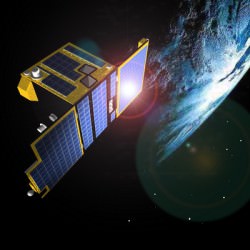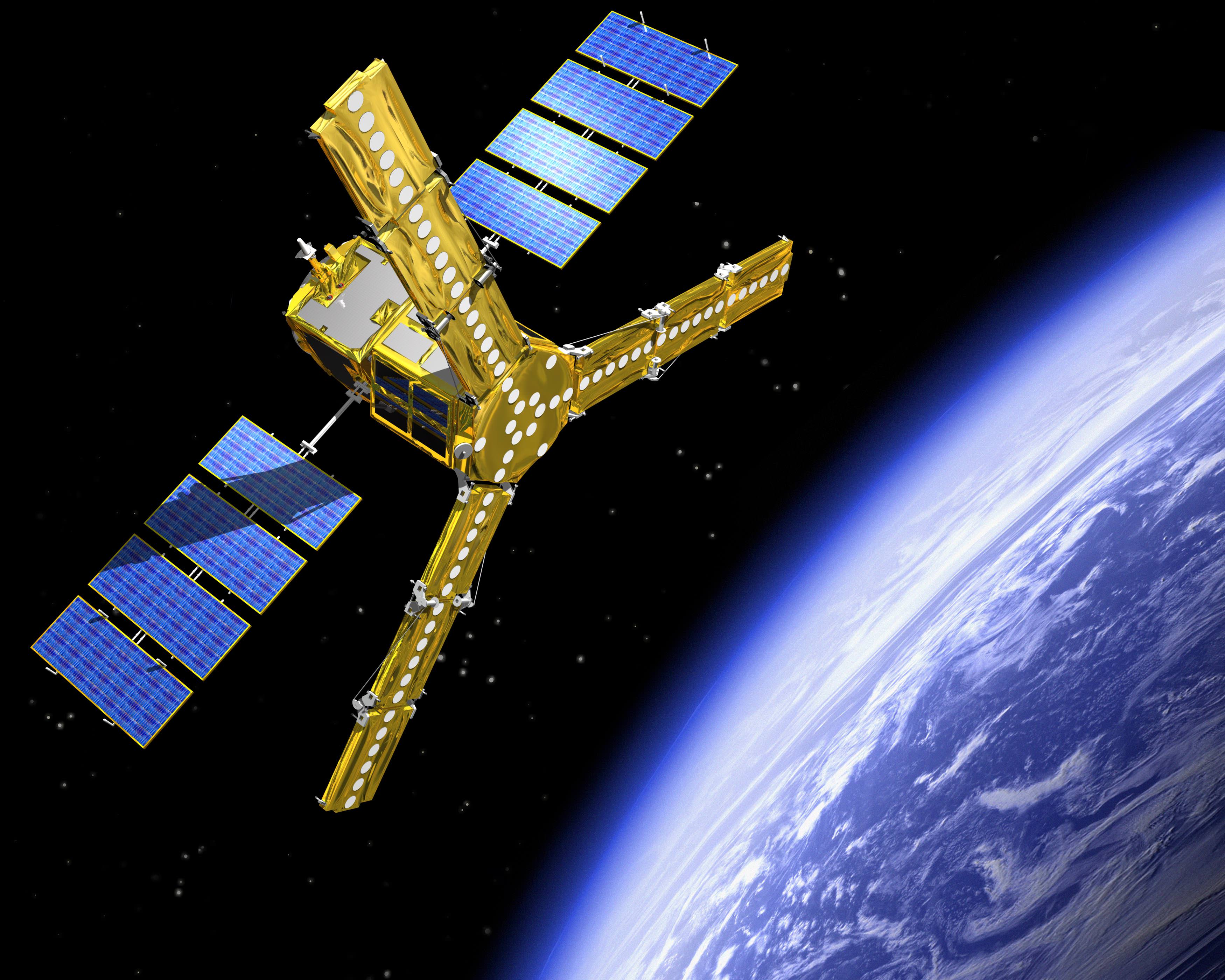UPDATE: Information about both SMOS and the Proba-2 satelite are on ESA Television. The program loop is embedded at the bottom of this post. Enjoy!
Last night at 2:50 am Central European Time, two European Space Agency (ESA) satellites were successfully launched from the Plesetsk Cosmodrome in Northern Russia. The Rockot launch vehicle was carrying both the Soil Moisture and Ocean Salinity (SMOS) satellite, and the Proba-2 satellite. SMOS will monitor the moisture exchange of the Earth between the ocean, air and land as well as the salinity of the oceans and the moisture of the soil in an effort to better understand how these factors influence the climate of our planet. Proba-2 will test out various instruments, including a small wide angle optical camera, and instruments for monitoring the plasma environment in orbit and the Sun’s corona.
SMOS is part of the ESA’s Earth Observation Envelope Program, an initiative to study in scientific detail from space the ongoing changes of the Earth. The GOCE satellite launched earlier this year to study the Earth’s gravity field and ocean circulation is another part of this program.
SMOS is the first satellite designed with the intent of measuring ocean salinity from space. To do this, it will implement a multi-part microwave antenna to monitor the oceans at a wavelength of about 23cm. At this frequency, an antenna of 5-10 meters (15-30 feet) is needed to make the measurements. This is too large to fit into a standard rocket payload bay, so the mission engineers employed what is called ‘synthetic aperture synthesis’. This is a technique used in radio astronomy that strings together separate antennae in different places, allowing the antennae to act as one larger antenna. A perfect example of this is the Very Large Array in New Mexico. The SMOS antenna has three foldable arms that are 3 meters (6 feet) long apiece, and extend to form a Y shape. Along the arms are 69 small antennae that all act together to take measurements as if they were one larger antenna.
Volker Liebig, ESA’s Director of Earth Observation Programs said in an ESA press release:
“The data collected by SMOS will complement measurements already performed on the ground and at sea to monitor water exchanges on a global scale. Since these exchanges – most of which occur in remote areas – directly affect the weather, they are of paramount importance to meteorologists. Moreover, salinity is one of the drivers for the Thermohaline Circulation, the large network of currents that steers heat exchanges within the oceans on a global scale, and its survey has long been awaited by climatologists who try to predict the long-term effects of today’s climate change.”
 The other satellite piggybacking on the SMOS mission launch is the suitcase-sized Proba-2, part of a series of missions in the ESA’s General Support Technology Program to test out new technology in space for further development on other ESA missions. Proba-2 is carrying a digital sun sensor, a high-precision magnetometer, and dual frequency GPS space receiver among other instruments for a Belgian study of solar physics and Czech study of plasma physics.
The other satellite piggybacking on the SMOS mission launch is the suitcase-sized Proba-2, part of a series of missions in the ESA’s General Support Technology Program to test out new technology in space for further development on other ESA missions. Proba-2 is carrying a digital sun sensor, a high-precision magnetometer, and dual frequency GPS space receiver among other instruments for a Belgian study of solar physics and Czech study of plasma physics.
Both satellites arrived in their sun-synchronous orbits, and initial systems checks indicate that both are operating as expected. SMOS will orbit at 760 km (472 miles) above the Earth, and Proba-2 at 725 km (450 miles). SMOS, once calibrated, will reach full operational status in about six months, and Proba-2 will become fully operation in two months.
Source: ESA, Eurekalert


Mmmm – should see some interesting results from the SMOS mission.
Suitcase size Proba2 – aww – isn’t it CUTE!
Actually, it’s more a washing machine sized PROBA2, but consumes on average the power of one light bulb (around 60W)
Still, it’s cute 🙂
@Silenus
The dimensions I got from the mission site were 0.6 × 0.6 × 0.8 meters. I guess I was thinking a rather big suitcase. It seems everyone at the airport these days has those HUGE rolling ones! And yeah, it’s cute little satellite.
When will they send up the last three Village People satellites?